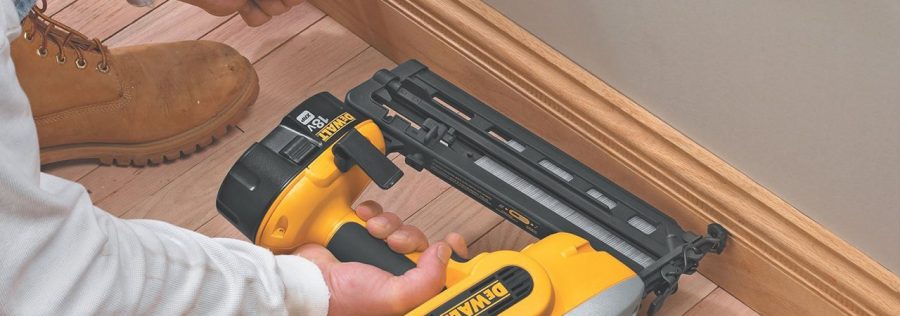Pneumatic air nailers have become a popular tool among professionals over the years, largely due to ease of use, speed, and availability. However, statistics show that people are treated for unintentional nail gun injuries each year in hospital emergency departments across the UK. What’s noteworthy though is that the majority of these injuries occur among consumers in non-work environments; and the incidents of injuries from air nailers are increasing quite rapidly.
These incidents usually involve air nailers with contact trip actuation also known as bump-fire, bounce-fire, or simultaneous discharge. This type of gun fires automatically when the muzzle comes into contact with a surface when the trigger is pressed, and is prone to accidental firing due to sensitive spring compression units within the muzzle. Many work-related injuries were from puncture wounds that contained a foreign body—resulting from a nail shot through an individual’s body part or a nail shot through construction material into an individual. There is a risk of nails penetrating the body:
- by direct contact with the muzzle of a loaded gun
- by deflection when skewing off a hard surface

The power generated by a nail gun can drive a nail through human bone. Other people can also accidentally place themselves into positions where they are directly exposed to the projectile path of a nailer. These situations have resulted in people being partially or permanently disabled, blinded, and in some cases killed. Most injuries were to the hand or fingers, but eye and dental injuries occurred as well as electrical burns and noise-induced hearing difficulty. Injuries caused by nail gun use include:
- being shot by a nail from a nail gun
- being struck by the nail gun or hose from a compressor, and
- being shot to the muscle, bone, or eyes
The OSHA reminds the public that it is important to always use pneumatic air nailers with caution and to recognize that training in proper nail gun use is an absolute necessary. Some key elements for preventing unintentional injuries associated with nailers use include:
- using a nail gun with a sequential-trip trigger mechanism
- reviewing all precautions and warnings before using a nail gun
- making sure the tool is placed firmly against the work piece
- keeping hands and fingers out of the line of fire and aim the gun away from the body
- disconnecting the tool before clearing jams or performing other maintenance

So, if it is your first time, read the user’s manual to learn how to operate and maintain the pneumatic air nailers and maintain the concerned safety tool. In addition to the above primary safety measures, there are few other essential elements that are equally important while using pneumatic air nailers. These include:
- keeping co-workers and bystanders away from the immediate work area
- never pointing the tool at anyone, even if it is empty or disconnected from the air supply
- never carrying the tool with a finger on the trigger
- never assuming the tool is empty
Based on a study, over 50% of the reported nail gun injuries were to the hand and fingers, 25% of those hand injuries involved structural damage to tendons, joints, nerves, and bones. After that the next most often cited injuries occurred to the leg, knee, thigh, foot, and toe areas. Therefore, it is important to wear appropriate personal protective equipment (PPE) so that being a worker you feel safe and comfortable. Hence, employers must provide the workers—
- Hard Hats
- High impact eye protection or safety glasses
- Hearing protection— earplugs or earmuffs
In addition to the above measures, it is imperative that both employees and employers report the injuries, irrespective of how significant or minor the injury is. If the employee isn’t willing to come forward, it is the duty of the employer to still address that so that proper measures can be taken.
















